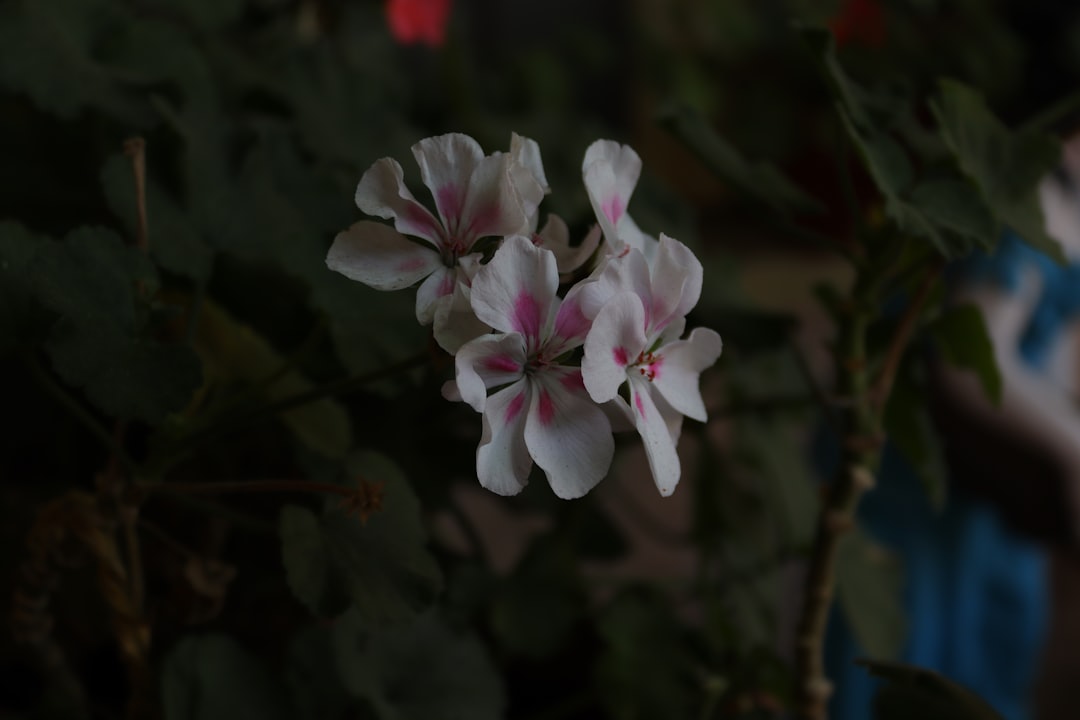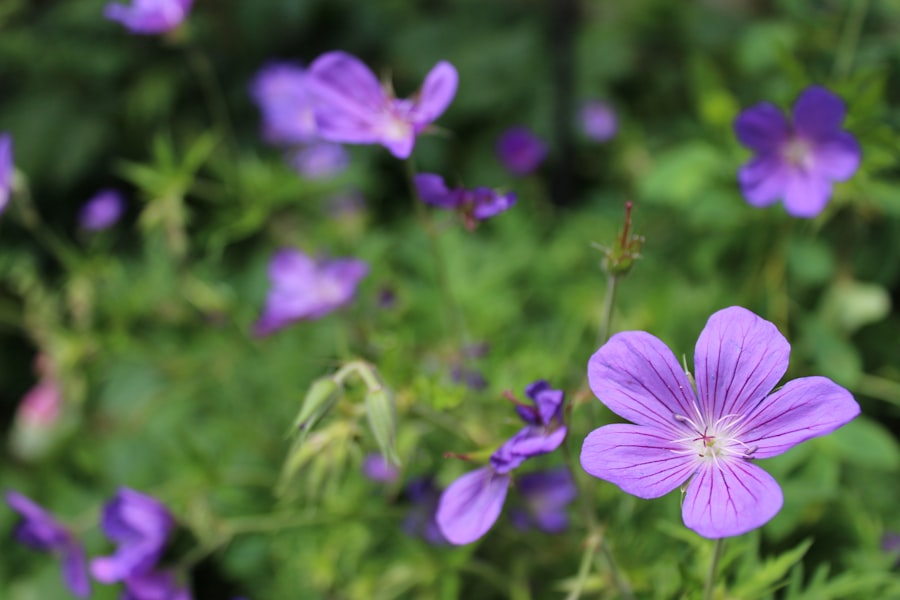Growing Geraniums: Starting from Cuttings

Geraniums are a popular choice for gardeners due to their vibrant colors, long blooming season, and easy care requirements. While they can be grown from seeds, many gardeners prefer to propagate geraniums from cuttings. This method allows for the production of new plants that are genetically identical to the parent plant, ensuring that the desired traits are preserved. Additionally, growing geraniums from cuttings is a cost-effective option as it eliminates the need to purchase new plants each year.
One of the main benefits of growing geraniums from cuttings is that it allows for the preservation of specific cultivars or varieties. If you have a favorite geranium plant with unique characteristics, taking cuttings ensures that you can continue to grow identical plants year after year. This is especially important for rare or hard-to-find varieties that may not be readily available in nurseries or garden centers.
Key Takeaways
- Growing geraniums from cuttings is an easy and cost-effective way to propagate new plants.
- Geraniums are hardy and versatile plants that can thrive in a variety of conditions.
- Proper preparation of cuttings and soil is crucial for successful geranium propagation.
- Planting geranium cuttings is a simple process that can be done in just a few steps.
- Regular watering and fertilizing, along with proper care and attention, can help ensure healthy and beautiful geraniums.
Understanding the Geranium Plant
Geraniums, also known as Pelargoniums, are flowering plants native to South Africa. They belong to the Geraniaceae family and are known for their showy flowers and aromatic leaves. Geraniums come in a wide range of colors, including red, pink, white, and purple, and can be found in various forms such as upright, trailing, or zonal.
There are several different types of geraniums, each with its own unique features. Zonal geraniums are the most common type and are characterized by their distinct dark markings on the leaves. Ivy geraniums have trailing stems and are ideal for hanging baskets or containers. Regal geraniums have large, showy flowers and are often grown as indoor plants. Scented geraniums have fragrant leaves that can be used for culinary purposes or in potpourri.
Preparing the Cuttings for Planting
The best time to take cuttings from geranium plants is in the spring or early summer when the plants are actively growing. Look for healthy, non-flowering stems that are about 4-6 inches long. Using clean, sharp pruning shears, make a clean cut just below a leaf node. Remove any flowers or buds from the cutting to redirect the plant’s energy towards root development.
Before planting the cuttings, it is important to prepare them properly. Remove the lower leaves from the stem, leaving only a few leaves at the top. This helps to reduce moisture loss and encourages root growth. If the remaining leaves are large, you can also trim them in half to further reduce water loss.
Choosing the Right Soil for Geranium Cuttings
| Soil Type | Benefits | Drawbacks |
|---|---|---|
| Peat Moss | Retains moisture well, good for rooting | Expensive, can be acidic |
| Perlite | Improves drainage, prevents soil compaction | Doesn’t retain moisture well, needs to be mixed with other soil types |
| Vermiculite | Retains moisture well, good for rooting | Expensive, can be dusty and irritate lungs |
| Coconut Coir | Retains moisture well, sustainable option | Can be expensive, needs to be mixed with other soil types |
| Compost | Provides nutrients, improves soil structure | Can be too rich for rooting, needs to be mixed with other soil types |
Choosing the right soil is crucial for successful geranium propagation. Geraniums prefer well-draining soil that is rich in organic matter. A mixture of equal parts peat moss, perlite, and vermiculite is an excellent choice for geranium cuttings. This combination provides good drainage while retaining enough moisture for root development.
To prepare the soil, mix the ingredients thoroughly in a container or wheelbarrow. Make sure there are no clumps or large pieces of organic matter. Fill small pots or seed trays with the soil mixture, leaving about an inch of space at the top for watering.
Planting Geranium Cuttings: Step-by-Step Guide
1. Fill small pots or seed trays with the prepared soil mixture.
2. Make a small hole in the center of each pot or tray using your finger or a pencil.
3. Dip the cut end of each geranium cutting into rooting hormone powder to promote root development.
4. Place one cutting in each hole and gently press the soil around it to secure it in place.
5. Water the cuttings thoroughly until water drains out from the bottom of the pots or trays.
6. Place the pots or trays in a warm, bright location, but out of direct sunlight.
7. Mist the cuttings with water daily to maintain humidity and prevent them from drying out.
8. After a few weeks, the cuttings should start developing roots. You can gently tug on the stems to check for resistance, indicating that roots have formed.
Watering and Fertilizing Geranium Cuttings

Proper watering and fertilizing are essential for the healthy growth of geranium cuttings. Water the cuttings whenever the top inch of soil feels dry to the touch. Avoid overwatering as this can lead to root rot. It is better to underwater than to overwater geranium cuttings.
When it comes to fertilizing, use a balanced liquid fertilizer diluted to half strength. Apply the fertilizer every two weeks during the growing season. Be careful not to over-fertilize as this can cause excessive leaf growth at the expense of flower production.
Caring for Geranium Cuttings: Tips and Tricks
To ensure healthy growth and development of geranium cuttings, there are a few tips and tricks you can follow:
1. Pinch back the tips of the cuttings once they have developed a few sets of leaves. This encourages branching and creates a bushier plant.
2. Remove any yellow or dead leaves regularly to prevent disease and maintain a tidy appearance.
3. Provide support for trailing or vining geraniums by using stakes or trellises.
4. Rotate the pots or trays every few days to ensure even growth and prevent leaning towards one side.
5. Keep an eye out for pests such as aphids or spider mites and treat them promptly with organic insecticides if necessary.
Common Problems and How to Fix Them
While geraniums are generally easy to grow, they can still face some common problems:
1. Root rot: This occurs when the soil is too wet and the roots become waterlogged. To fix this issue, allow the soil to dry out between waterings and improve drainage by adding more perlite or vermiculite to the soil mixture.
2. Powdery mildew: This fungal disease appears as a white, powdery coating on the leaves. To prevent powdery mildew, ensure good air circulation around the plants and avoid overhead watering. If powdery mildew does occur, treat it with a fungicide specifically formulated for this disease.
3. Aphids: These small, sap-sucking insects can cause stunted growth and distorted leaves. To control aphids, spray the affected plants with a mixture of water and insecticidal soap or neem oil.
Propagating Geraniums: Taking Cuttings from Mature Plants
In addition to growing geraniums from cuttings, you can also propagate them by taking cuttings from mature plants. This method allows you to create new plants from established ones without having to purchase new ones.
To take cuttings from mature geranium plants, follow these steps:
1. Select a healthy stem that is about 4-6 inches long.
2. Using clean pruning shears, make a clean cut just below a leaf node.
3. Remove any flowers or buds from the cutting.
4. Prepare the cutting by removing the lower leaves, leaving only a few at the top.
5. Dip the cut end of the stem into rooting hormone powder.
6. Plant the cutting in a pot filled with well-draining soil.
7. Water the cutting thoroughly and place it in a warm, bright location.
8. Follow the same care instructions as for geranium cuttings taken from younger plants.
Enjoying Your Beautiful Geraniums
Growing geraniums from cuttings is a rewarding and cost-effective way to enjoy beautiful, healthy plants year after year. By understanding the geranium plant, preparing the cuttings properly, choosing the right soil, and providing the necessary care, you can ensure successful propagation and enjoy a garden filled with vibrant colors and delightful fragrances. Whether you choose to grow zonal, ivy, regal, or scented geraniums, the process of growing them from cuttings remains the same. So go ahead and give it a try – you’ll be rewarded with a stunning display of geraniums in your garden.
If you’re interested in learning how to start a geranium from a cutting, you might find this article from Lawn World helpful. They provide step-by-step instructions on propagating geraniums from cuttings, allowing you to expand your garden without having to purchase new plants. Check out their comprehensive guide here for all the details you need to successfully grow your own geraniums.
FAQs
What is a geranium cutting?
A geranium cutting is a piece of stem or leaf that is cut from a mature geranium plant and used to propagate a new plant.
When is the best time to take a geranium cutting?
The best time to take a geranium cutting is in the spring or early summer when the plant is actively growing.
What tools do I need to take a geranium cutting?
You will need a sharp, clean pair of scissors or pruning shears to take a geranium cutting.
How do I take a geranium cutting?
To take a geranium cutting, select a healthy stem or leaf and cut it at a 45-degree angle just below a node. Remove any leaves from the bottom of the cutting and dip the cut end in rooting hormone.
What kind of soil should I use to plant a geranium cutting?
You should use a well-draining soil mix that is rich in organic matter to plant a geranium cutting.
How often should I water a geranium cutting?
You should water a geranium cutting regularly, keeping the soil moist but not waterlogged.
How long does it take for a geranium cutting to root?
It can take anywhere from 2-6 weeks for a geranium cutting to root, depending on the conditions and the type of geranium.
When can I transplant a geranium cutting?
You can transplant a geranium cutting once it has developed a strong root system and is showing new growth, usually after 4-6 weeks.



